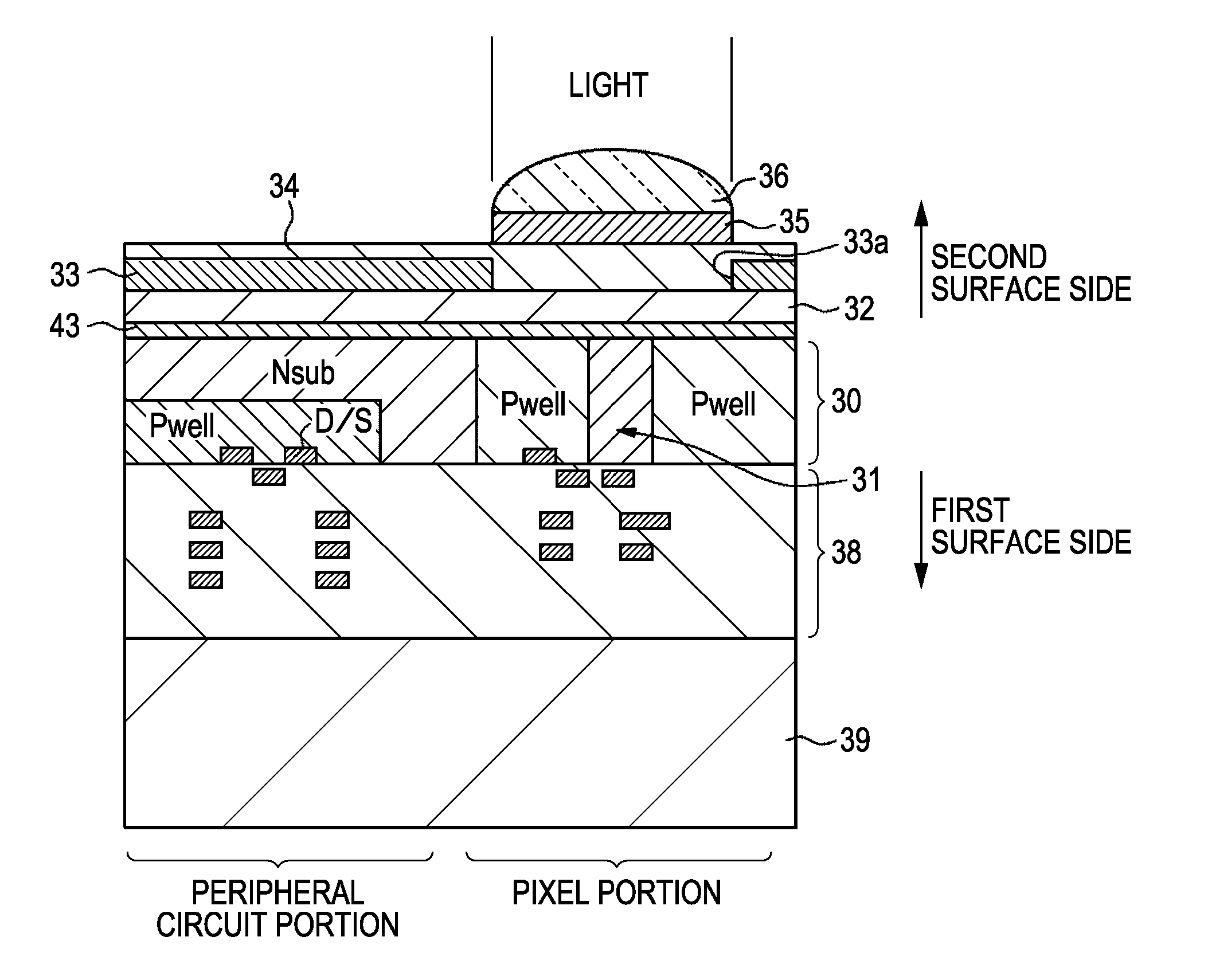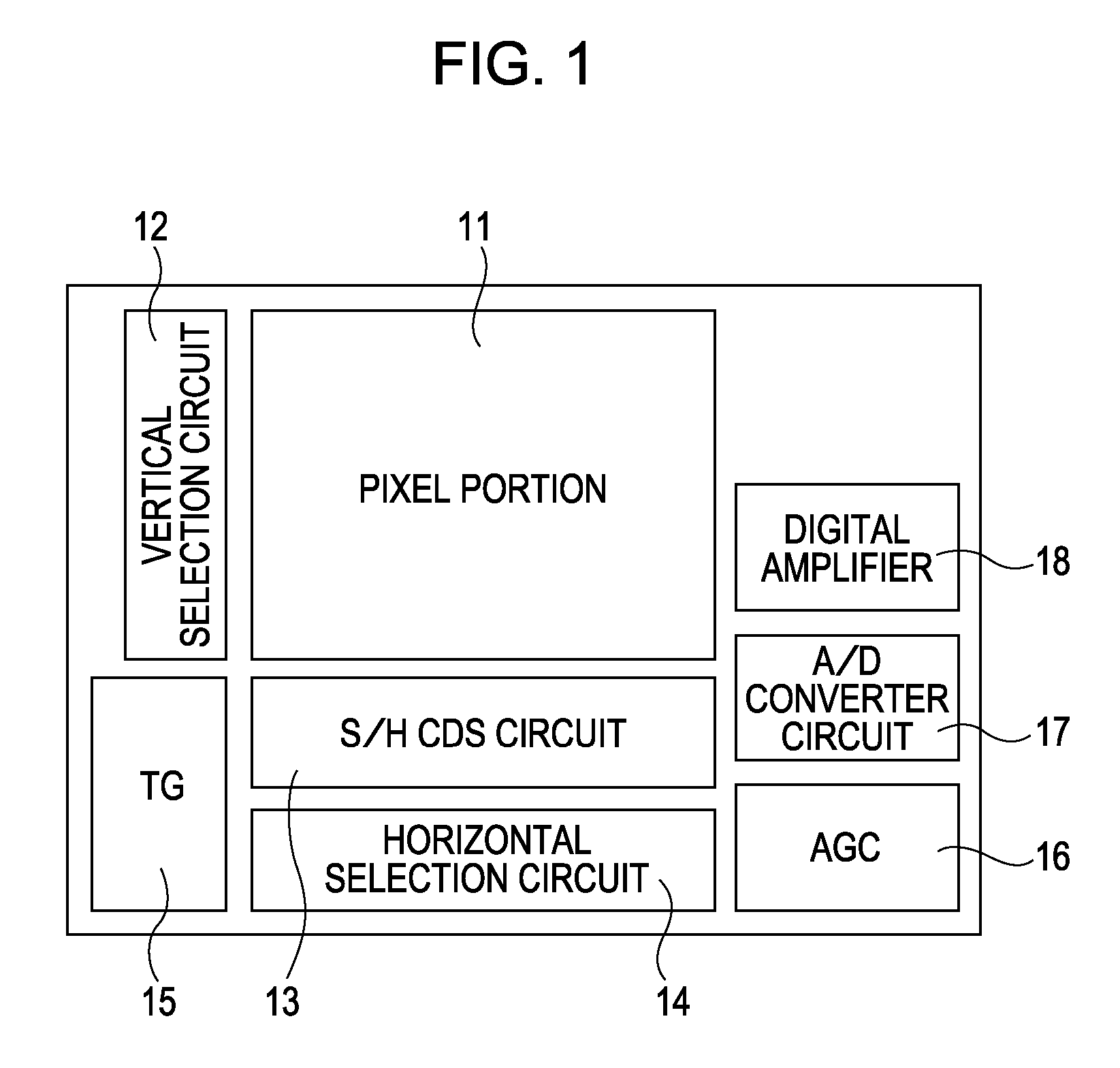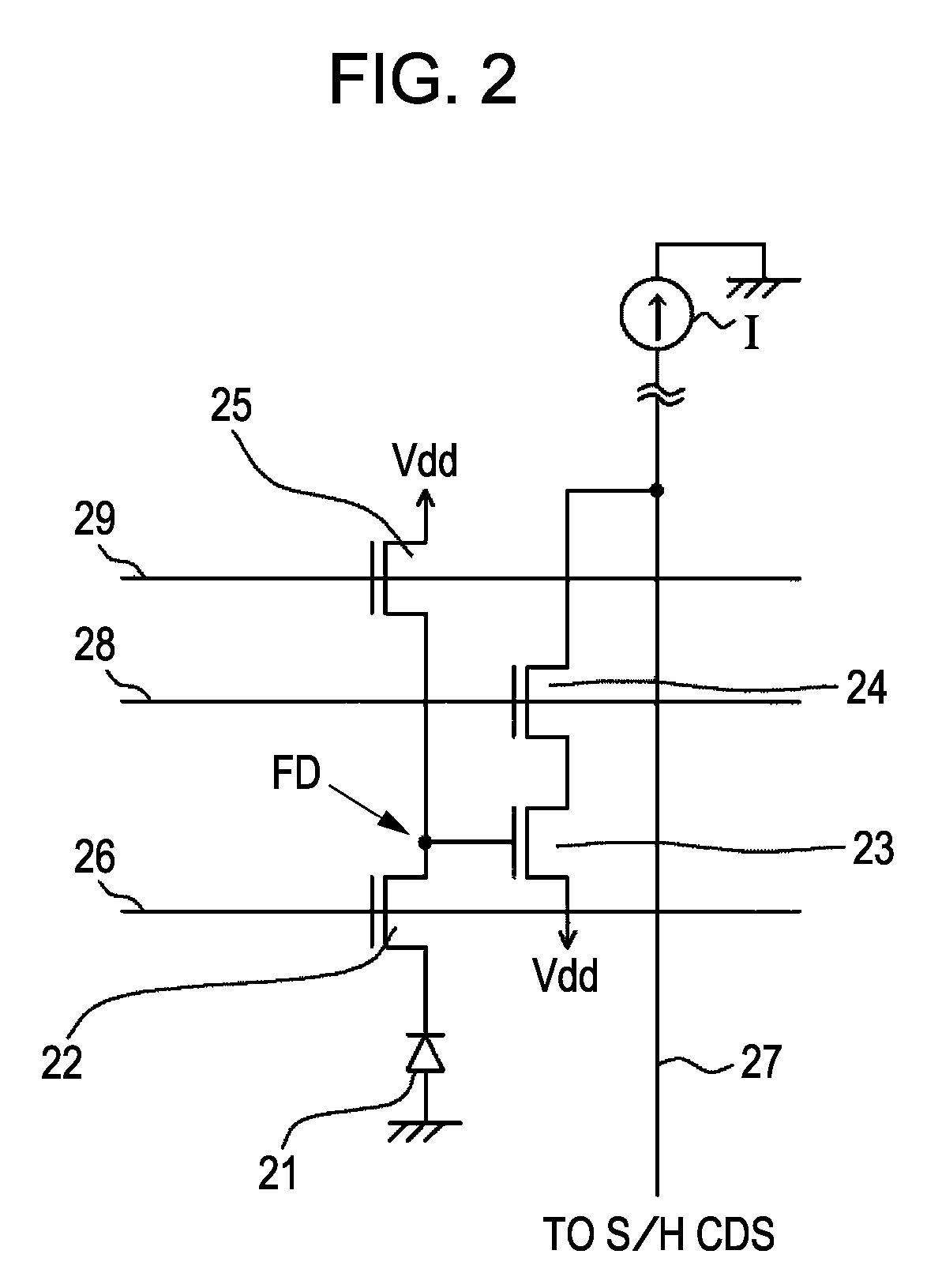Solid-state imaging device, method for producing same, and camera
a solid-state imaging and imaging device technology, applied in the direction of color television, television systems, radio control devices, etc., can solve the problems of reducing sensitivity, difficult to form and the method of forming the p-type semiconductor region by ion implantation and annealing with activation at a high temperature for a long period of time is not desirable, so as to suppress the generation of dark current
- Summary
- Abstract
- Description
- Claims
- Application Information
AI Technical Summary
Benefits of technology
Problems solved by technology
Method used
Image
Examples
first embodiment
[0058]FIG. 1 is a schematic block diagram of a solid-state imaging device according to an embodiment of the present invention.
[0059] The solid-state imaging device includes a pixel portion 11 and peripheral circuitry, the pixel portion 11 and the peripheral circuitry being disposed on the same semiconductor substrate. In this embodiment, the peripheral circuitry includes a vertical selection circuit 12, a sample-and-hold correlated double sampling (S / H CDS) circuit 13, a horizontal selection circuit 14, a timing generator (TG) 15, an automatic gain control (AGC) circuit 16, an A / D converter circuit 17, and a digital amplifier 18.
[0060] The pixel portion 11 includes many unit pixels that are arrayed in a matrix, as described below. Address lines and the like extend along rows of the pixels. Signal lines and the like extend along columns of the pixels.
[0061] The vertical selection circuit 12 successively selects the pixels on a row-by-row basis. The vertical selection circuit 12 re...
second embodiment
[0119]FIG. 11 is a fragmentary cross-sectional view of the pixel portion of the substrate 30 of a solid-state imaging device according to a second embodiment. The same elements as those in the first embodiment are designated using the same reference numerals, and redundant description is not repeated.
[0120] Two control gates, i.e., a first control gate 52-1 and a second control gate 52-2, are formed on the first surface of the substrate 30 with a gate-insulating film (not shown) provided therebetween. The first control gate 52-1 is located between the transfer gate 51 and the second control gate 52-2. The first and second control gates 52-1 and 52-2 are superposed on the photodetector 31. The first and second control gates 52-1 and 52-2 are composed of, for example, polysilicon. Each of the first and second control gates 52-1 and 52-2 preferably has a thickness comparable to the thickness of the transfer gate 51 in view of processability and resistance. Light is incident on the sec...
third embodiment
[0134]FIG. 13 is a fragmentary cross-sectional view of the pixel portion of the substrate 30 of a solid-state imaging device according to a third embodiment. The same elements as those in the first embodiment are designated using the same reference numerals, and redundant description is not repeated.
[0135] The control gate 52 is formed on the first surface of the substrate 30 with a gate-insulating film (not shown) provided therebetween. In this embodiment, the control gate 52 partially overlaps the photodetector 31. The hole-accumulation region 44 is not formed under the control gate 52. That is, a region where only the control gate 52 is located next to the transfer gate 51 and a region where only the hole-accumulation region 44 is located are formed. Alternatively, the hole-accumulation region 44 may be formed on the entire surface of the photodetector 31. Furthermore, the control gate 52 and the hole-accumulation region 44 may be inversely arranged.
[0136] The above-described s...
PUM
 Login to View More
Login to View More Abstract
Description
Claims
Application Information
 Login to View More
Login to View More - R&D
- Intellectual Property
- Life Sciences
- Materials
- Tech Scout
- Unparalleled Data Quality
- Higher Quality Content
- 60% Fewer Hallucinations
Browse by: Latest US Patents, China's latest patents, Technical Efficacy Thesaurus, Application Domain, Technology Topic, Popular Technical Reports.
© 2025 PatSnap. All rights reserved.Legal|Privacy policy|Modern Slavery Act Transparency Statement|Sitemap|About US| Contact US: help@patsnap.com



